Celebrity portraiture — but not as you know it
Director Robert Wilson’s adventures in the theatre are legendary, but it’s his high-definition ‘moving portraits’ of big-name celebrities that are really garnering attention | WATCH

Brad Pitt, wearing nothing but white boxer shorts and socks, is standing in front of a brick wall holding a gun in his hand. If it weren’t for his perfectly sculpted abdomen gently contracting with each breath, the star would be as still as a statue. Even as it starts to pour with rain, Pitt doesn’t move. Then, after a couple of minutes, he slowly raises the gun at the viewer as if he is about to shoot. Could it be loaded? The image certainly is. Pitt pulls the trigger, several times, revealing the gun to in fact be a water pistol. With a few squirts, the gaze directed at the actor has been turned on the viewer.
The amusing four-minute scene, shot in 2004, will be displayed as part of an Australian exclusive exhibition of 23 high-definition large-scale video portraits – featuring the likes of popstar Lady Gaga, burlesque performer Dita Von Teese and actors Winona Ryder and Sean Penn – by avant-garde American theatre director Robert Wilson at the Art Gallery of South Australia.
Looping continuously and displayed on screens anywhere up to 3.6m wide, each portrait has something in common. It features a subject that is imperceptibly moving, creating the illusion of a living, breathing person inhabiting the highly curated scene inside the screen. It is portraiture, but not as we know it.
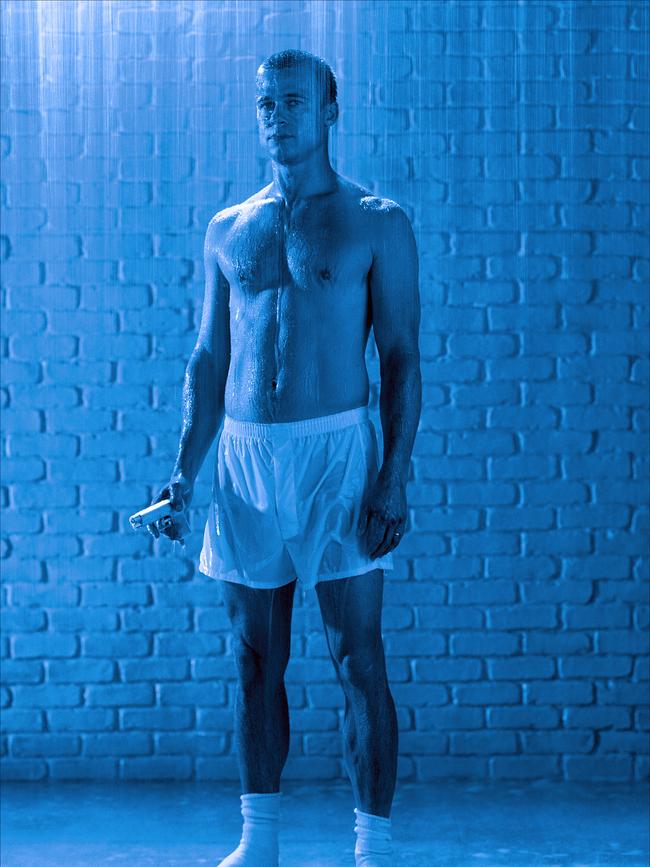
Speaking over the phone from Geneva, where he has just opened an exhibition, Wilson says that when it came to collaborating with Pitt on the concept for the shoot, the actor had one non-negotiable term.
“He said ‘I don’t mind standing in my underwear but I want to wear white socks because my feet are so ugly’,” Wilson says. “Sean Penn would not do the same … he was all covered up. He was not going to stand in his underwear on the street corner in the rain.”
To say Wilson’s oeuvre is prolific is an understatement. The 80-year-old director, who works across the world and “has been on the road for 55 years”, has a home base in the Watermill Center in Long Island, New York, an “interdisciplinary laboratory” he founded to create new work, collaborate with other artists and house his collection of more than 6000 artefacts. As an opera and theatre director he has worked with creative heavyweights such as Philip Glass and Lucinda Childs for Einstein on the Beach (1976) – “you will never forget it, even if you hate it” said a review in the New York Times – and William S Burroughs and Tom Waits for The Black Rider: The Casting of the Magic Bullets (1990). As a director he is renowned for his stark imagery and mastery of lighting; indeed he admits his production of Wagner’s Ring cycle had more than 5000 lighting cues.
But while his adventures in the theatre are legendary, it’s his high-definition “moving portraits” that have garnered him worldwide attention. The Louvre, which does not typically show living artists, invited Wilson in 2013 to stage a solo exhibition, for which he shot new video portraits of singer Lady Gaga, two of which will be shown in Adelaide.
One of those portraits is modelled on French artist Ingres’s 1805 painting Mademoiselle Caroline Riviere – the titular subject was the daughter of a court official in Napoleon’s empire – a work that today hangs in the Louvre. With a boa draped on her arm, Gaga assumes the same costume, body pose and neutral expression as Riviere in the 10-minute portrait. The only evidence of movement from Gaga is the occasional closing of her eyes, as if she is disappearing inside herself.
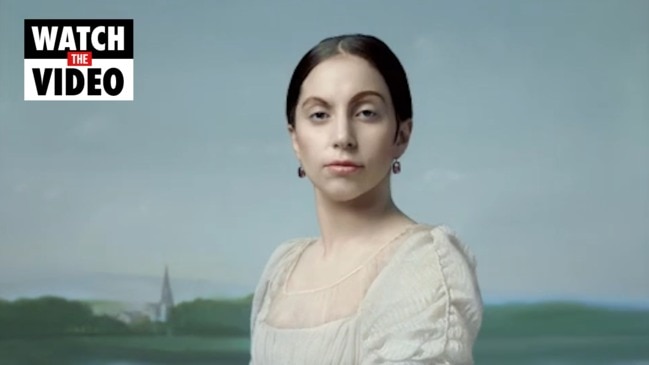
In another portrait the burlesque performer Dita Von Teese is perchedon a swing staring into the sky, her gaze occasionally following the sound of passing aircraft that punctuates the song of American singer Ethel Merman.
The concept harks back to 1955 American film The Girl in the Red Velvet Swing, directed by Richard Fleischer, in which Joan Collins played a showgirl caught in a love triangle. Here, that showgirl is wearing bejewelled underwear, heels and rhinestone patches that cover her nipples. “Well that is what she wanted to do so I said ‘great, let’s do it’,” says Wilson. “Salma Hayek, it would not be right for her. But for Dita it was what she wanted. Each portrait fits (the subject’s) own personality.”
The scenes overflow with references to art history, television, film and contemporary culture, though ultimately – as with all art – the meaning of the experience will be up to the viewer.
For Wilson, this fusion of time-based cinematography with the frozen moment of still photography has presented a new medium in which to explore his theatrical language.
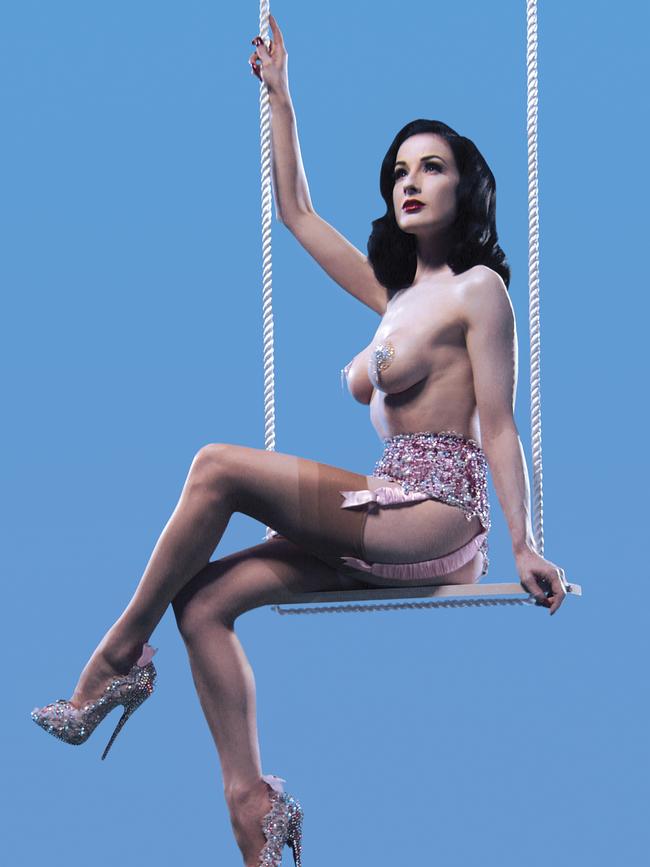
Costume, lighting, makeup and location are all carefully curated in a studio setting with up to 50 technicians, such as lighting designers and camera people, working on each portrait. “They’re very technical in terms of light,” Wilson says, before emphasising the point. “Everything.”
Prior to filming, Wilson makes a series of drawings to flesh out different concepts for his sitter. Together, they make a plan around the narrative, theme and costume.
During the filming everyone in the room is instructed to remain silent, which in the case of Lady Gaga, who sat in the same position for seven hours, was a marathon-style performance. “I made an MTV award performance with her and she changed clothes seven times and changed make-up seven times,” says Wilson of Gaga’s 2013 performance of her single Applause for which he designed the set and lighting. “And that was in two minutes and 21 seconds. Here she is just the opposite. Working with stillness and the movement in stillness.”
Wilson is a longtime devotee of John Cage, whose Lecture on Nothing – a spoken-word performance piece first presented in 1950 and later included in his collection of writing, Silence – he delivered wearing white pancake makeup (pictured top) on his last visit to Australia in 2019 (Wilson’s productions of The Threepenny Opera, Woyzeck and The Black Rider also have been performed in Australia). Cage’s approach to silence – according to the composer, there is no such thing – was life-changing for Wilson’s art practice and informed the way he created the portraits.
“As long as we’re alive we’re always moving,” Wilson says. “Sometimes when we’re very still we become more aware of movement than when we make a lot of movement. The room is silent. It’s the way of listening to the silence.”
If not incredibly tense, it sounds as if the atmosphere during the shoot could be meditative?
“Yes, it is (meditative),” Wilson agrees. “But I keep saying, it’s important to stay awake. If a grizzly bear is looking at you he’s not sleeping. It’s a balance between interior reflection and exterior.”
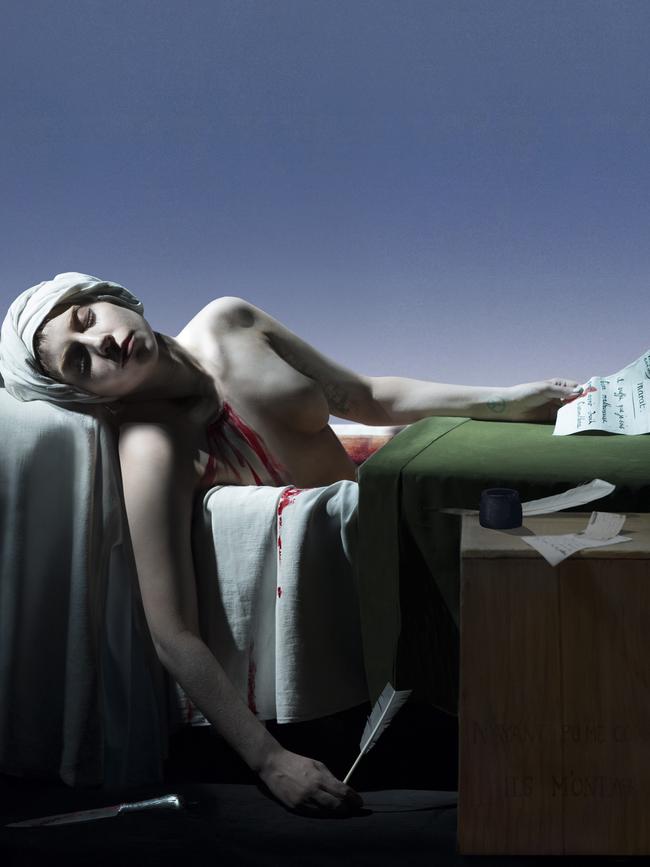
Wilson started thinking about shooting people in full-length video portraits back in the 1970s for artworks that could be shown at bus stops, on trains and on the backs of seats on aeroplanes. The problem was that television screens were typically horizontal. He started to wonder about making a vertical screen in proportion to the human body and took the idea to the head of Sony in Japan, Akio Morita. Flipping a TV monitor on its side and placing black tape along the edges, he filmed Morita standing on a staircase. Morita wouldn’t sponsor the project despite keeping the portrait in his Tokyo office for years, says Wilson, who later found a home for the concept on German public television channel ZDF in 1978. Television programming ended by midnight and resumed at 6am so Wilson made 100 30-second portraits that were broadcast during the dead zone. The portraits of animals, celebrities and people from the street were later screened at Swedish soccer games, the Centre Pompidou, and at Japanese railway stations.
Then came the 2000s and the new era of high-definition television, which offered more possibilities for his vertical vision. A residency at America’s VOOM HD Network from 2004 to 2008 followed, in which Wilson and his long-time collaborator Noah Khoshbin further refined the production of the portraits.
“I did a whole family of people from different backgrounds,” Wilson says. “I did animals, I did athletes, I did royalty, I did celebrities like Sean Penn, Brad Pitt, Winona Ryder.”
At the AGSA, the portraits will be displayed on screens ranging from about 1m to 2m in height. Rhana Devenport, the gallery’s director, says she will be drawing out works from the gallery’s collection to speak to each portrait (“The portraits determine what I’ve chosen from the collection rather than the rooms deciding which works go into each gallery”).
Among the AGSA works on show will be six new acquisitions by artists such as Tasmania’s Pat Brassington, and fashion house Romance Was Born. Some of the connections are fun and unexpected. Pitt’s portrait, for example, will be paired with two chairs by Scottish designer Charles Rennie Mackintosh because the actor likes to collect chairs (who knew?).
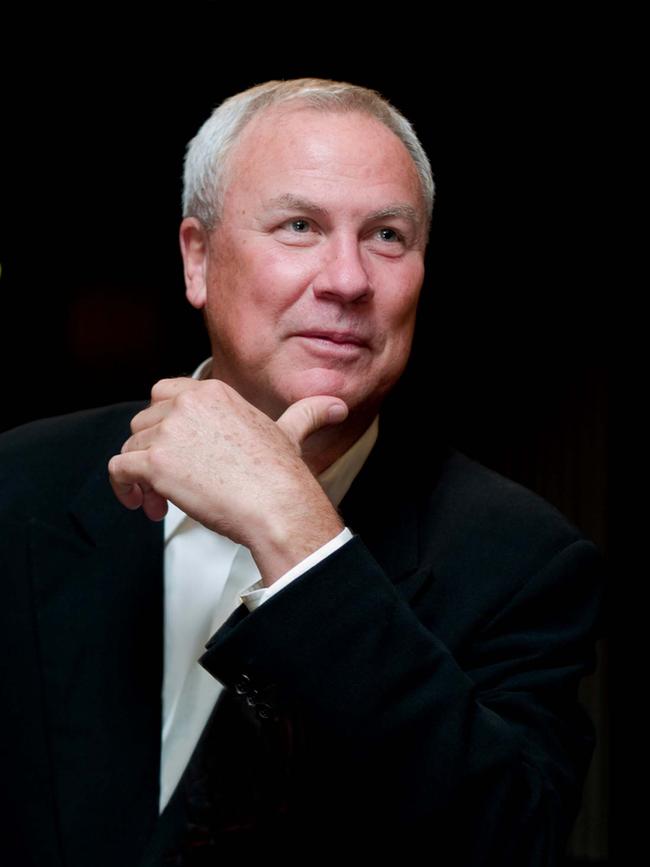
Among the actors and artists there will be Wilson’s moving portraits of a panther, two owls, a porcupine and an elk. Growing up in Texas, Wilson developed a fascination for animals on hunting trips with his father. And while Pitt may be holding a water pistol in his video portrait, Wilson has a deep antipathy to guns.
“At six years old I was given a gun for Christmas. Shocking,” says Wilson. “That was the culture and still is.”
Our interview takes place just one day after 19 students and two teachers are fatally gunned down at Robb elementary school in Texas by 18-year-old gunman Salvador Ramos, shot dead by police at the scene.
“An 18-year-old was allowed to buy guns,” Wilson says. “It’s shocking there are not laws to prevent an 18-year-old to go and buy guns to go out and kill children.”
When Wilson was a boy, the experience of hunting brought up different emotions, an ambivalence he has subsequently explored in his art.
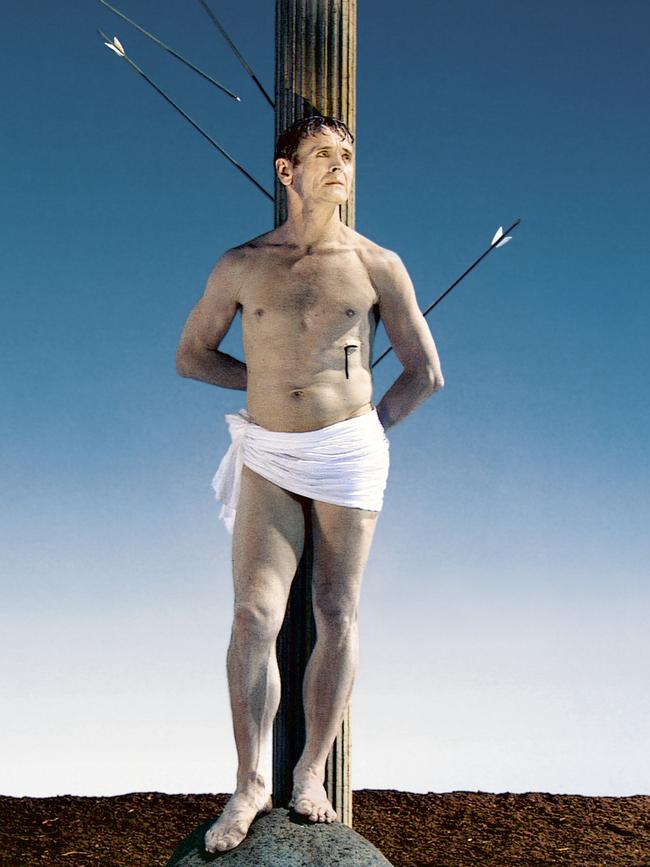
As he wrote of a recent show of his delicate hand-blown glass deer sculptures at Cristina Grajales gallery in New York: “As a boy, I never wanted the guns my father gave me, nor to go deer hunting with him. The only thing positive about the experience was that we would get up early in the morning and go out on our own to sit in a blind, waiting for a deer to appear.”
Through the sitting, waiting and watching, Wilson began to develop an appreciation for the way animals move, a skill he would apply to directing actors on the stage. “A lot of my work in the theatre was influenced by animal behaviour much more than psychology and an actor trying to ‘act’ natural. By watching animals, I began to build my vocabulary in the theatre.”
When it comes to applying that vocabulary to portraiture, Wilson sees himself as part of a long tradition.
“Portrait for me is of people: who they are and who they would like to be. It’s something that artists have done through time, making portraits of different personalities,” he says. Yet to choose his favourite subject would be like picking a favourite child.
“You like them because of who they are and how they’re different from one another. It’s like this crazy family.”
Robert Wilson: Moving Portraits is showing at the AGSA from July 9 to October 3.


To join the conversation, please log in. Don't have an account? Register
Join the conversation, you are commenting as Logout